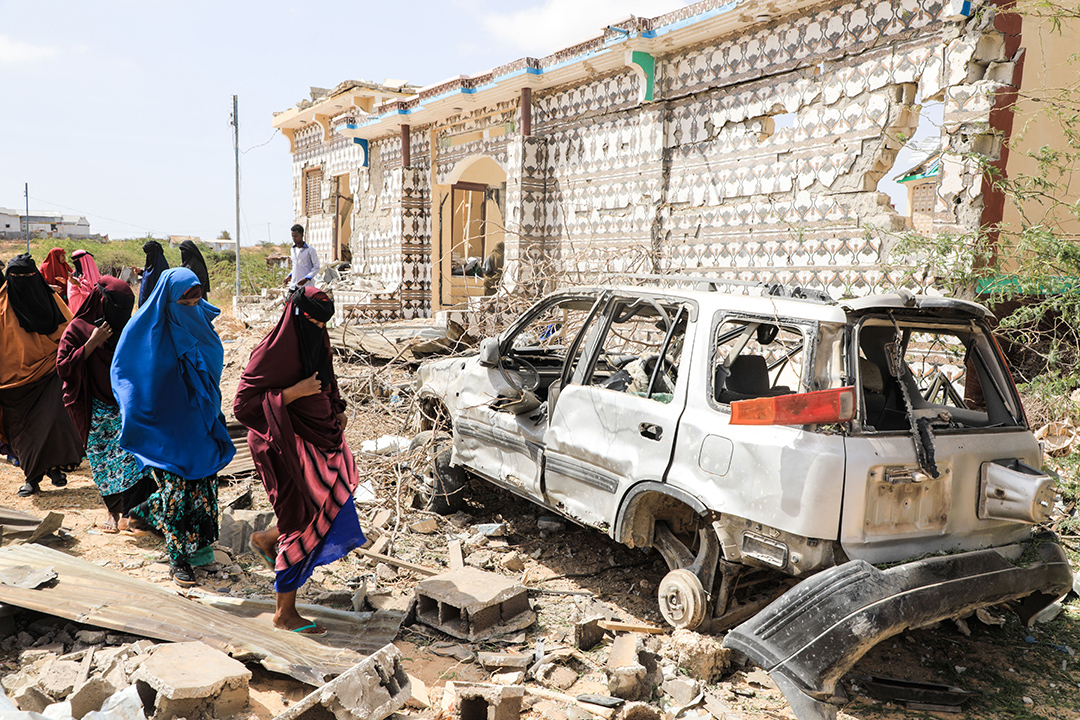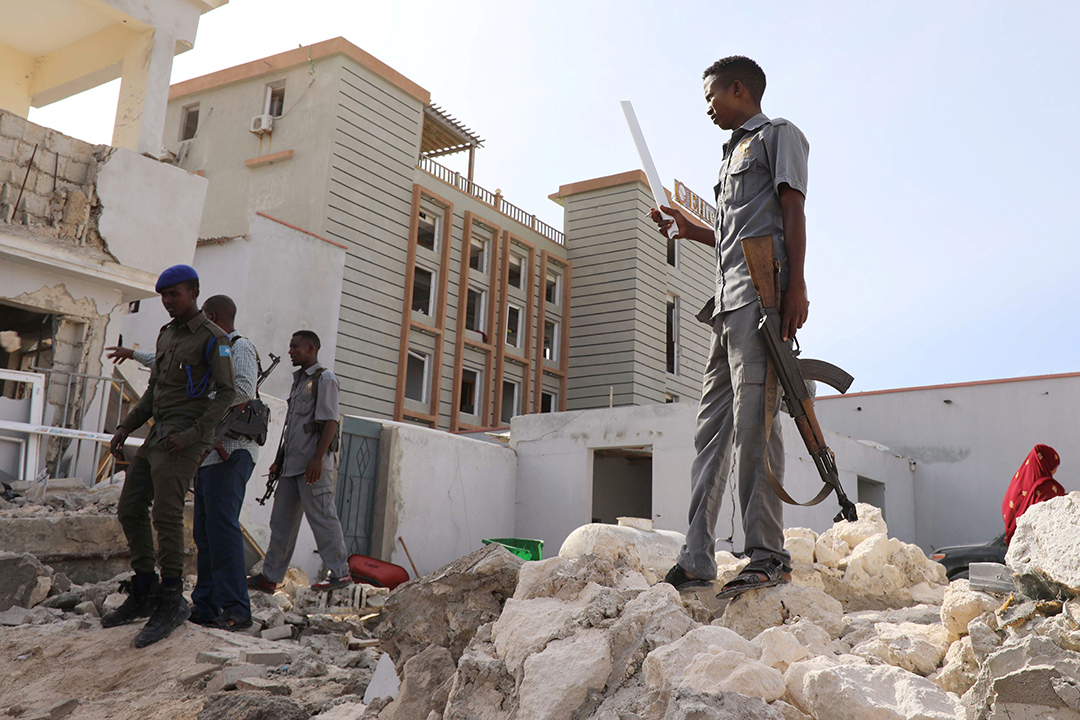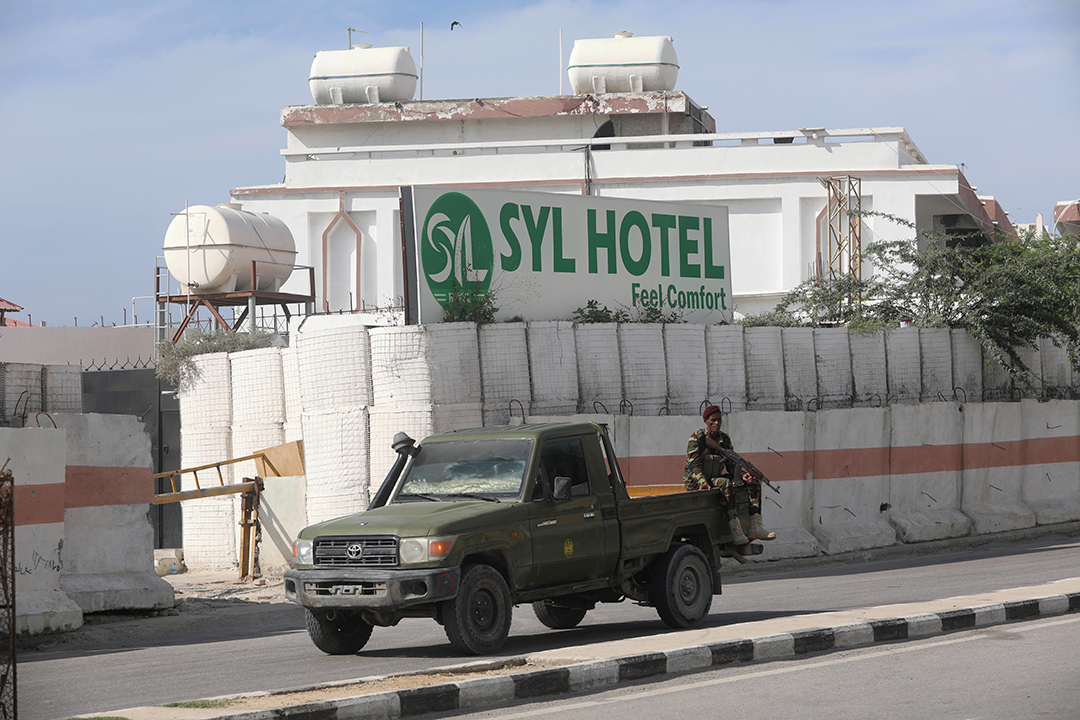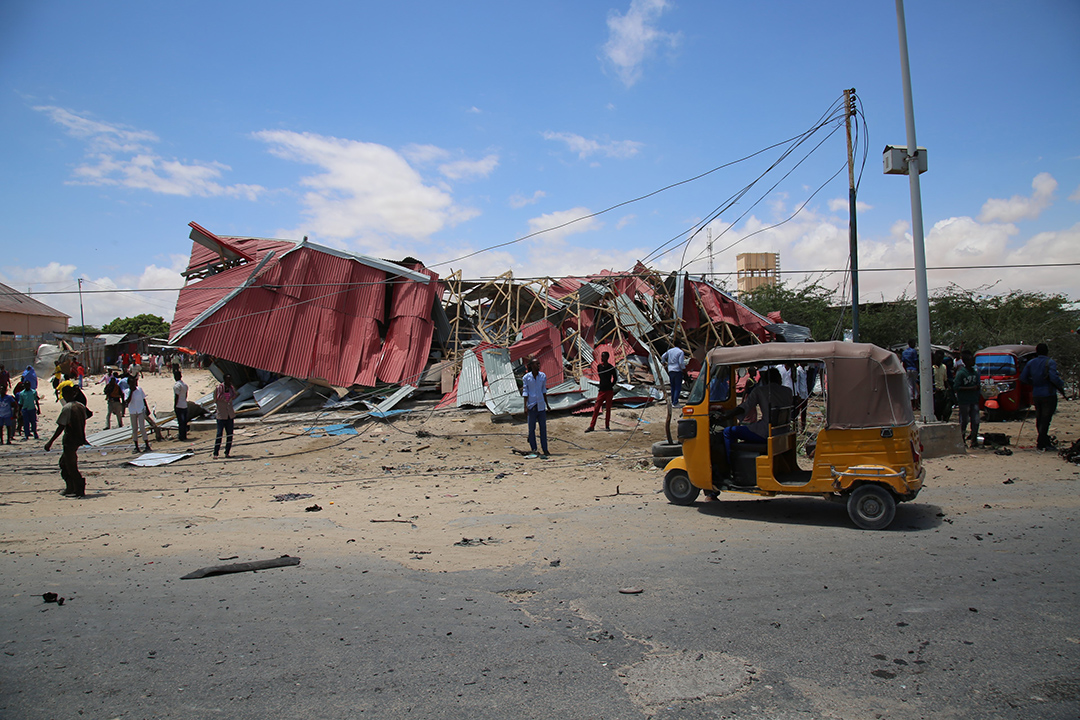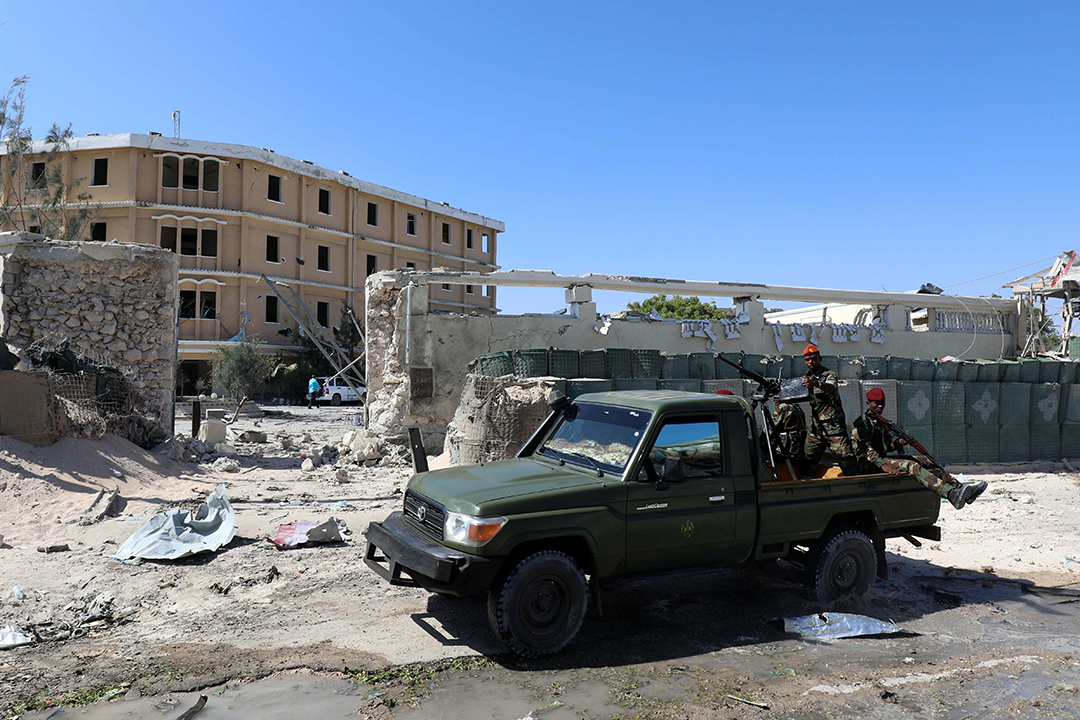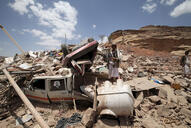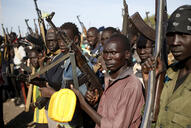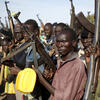Al-Shabaab in Somalia remains one of al-Qaeda’s strongest and most successful affiliates. The terrorist organization continues to exploit the Somalian government’s limited state capacity and the country’s dire humanitarian crises to launch indiscriminate attacks against government forces, foreign peacekeepers, and civilians. Their goals are to destroy the Federal Government of Somalia (FGS), rid their country of foreign forces, and establish a “Greater Somalia,” joining all ethnic Somalis across East Africa under strict Islamic rule. A joint United Nations and African Union (AU) peacekeeping force, now known as the African Union Transitional Mission to Somalia (ATMIS), the United States, and several East African nations have been actively involved in combating al-Shabaab since it rose to prominence in the early 2000s. However, al-Shabaab has proven its resilience against numerous counterinsurgency campaigns, posing a threat to the stability of Somali and the region.
The foundations of Harakat Shabaab al-Mujahidin, or al-Shabaab (“The Youth”), originated in the late 1980s when Somalis who had joined the Afghan mujahideen in the war against Russia returned home. The returned Somali fighters established a Salafi militant organization al-Ittihad al-Islami (AIAI) during this time. Shortly after, Somalia descended into civil war, culminating in the collapse of the Somali state in 1992. AIAI later dissolved and a group of its younger, hardline recruits joined forces with an alliance of sharia courts in south-central Somalia known as the Islamic Courts Union (ICU), serving as its enforcement wing.
In the late 1990s and into the early 2000s, the ICU expanded its control as efforts continued to re-form the Somali state. Despite the establishment of the Transitional Federal Government (TFG) in October 2004 in Kenya, the ICU gained control of Mogadishu in June 2006. At the request of the TFG, Ethiopia invaded Somalia and ousted the ICU from the capital in December. The invasion and subsequent two-year occupation by Ethiopian forces fueled public resentment and triggered the formal establishment of al-Shabaab and its ongoing insurgency.
Between 2006 and 2008, al-Shabaab asserted control over most of southern Somalia and grew its forces into the thousands. In 2007, the United Nations approved the creation of a regional peacekeeping force, the African Union Mission in Somalia (AMISOM), to protect the recently re-established TFG in Mogadishu. By 2009, the Ethiopian military withdrew and was replaced by AMISOM forces. The introduction of foreign forces from across East Africa galvanized al-Shabaab to expand its operations beyond Somalia. On July 11, 2010, al-Shabaab launched its first foreign attack in Kampala, Uganda, killing seventy-six people in a series of suicide bombings.
The terrorist group reached its peak in 2011 when it controlled parts of the capital city of Mogadishu and the vital port of Kismayo. However, the group’s success proved short-lived as AMISOM and TFG forces were able to push al-Shabaab out of Mogadishu and several other urban centers in August. This was followed by a brief operation launched by Kismayo in October.
In an attempt to revitalize its insurgency, al-Shabaab announced their launched a four-day siege of a mall in Nairobi, Kenya that killed sixty-seven people, the deadliest terrorist attack in Kenya in over fifteen years. In March 2014, al-Shabaab killed one foreign national and injured several others in a nightclub attack in Djibouti, the first suicide bombing in the country’s history. In 2015, al-Shabaab killed 148 people at Garissa University College in Kenya after taking 700 students hostage during a 15-hour siege. In October 2017, twin truck bombings in Mogadishu widely believed to be perpetrated by al-Shabaab killed more than 500 people; five years later, over 100 more were killed at the same location. Between 2019 and 2020, al-Shabaab carried out a series of attacks in Mogadishu and northern Kenya, including an attack on a Kenyan military base housing U.S. forces that killed three U.S. servicemembers.
Al-Shabaab’s resilience was, in part, due to the faltering efficacy of the internationally-backed counteroffensive and weakening capacity of the Somali government. Despite regaining previously captured territories between 2012 and 2015, state and international forces struggled to maintain control in several areas, allowing militants to return. Al-Shabaab has also been known to abandon its bases to draw security forces into ambushes or distract them while launching attacks in the then less protected urban centers. The death toll for AU forces has been high with over 3,500 deaths incurred since the mission began in 2007. The inability to exact meaningful control of al-Shabaab and prospect of further casualties caused AMISOM forces to remain in their bases, conducting few offensive operations since 2016.
In consequence, AMISOM has sought to drawdown its presence in Somalia and transfer primary security authority to Somali forces. However, Somali forces face their own capacity issues, lacking sufficient equipment and training while contending with the infiltration of al-Shabaab in their ranks. For this and several other reasons, the transfer of responsibility has faced multiple delays and setbacks, with the African Union Peace and Security Council voting to extend AMISOM’s mandate until the end of 2021. However, AMISOM remained in place until April 2022, when it was replaced with the AU Transition Mission in Somalia (ATMIS). With around eighteen thousand troops, ATMIS serves as an extension of AMISOM and is not due to fully depart until the end of 2024. As of June 2023, 2,000 ATMIS forces have departed Somalia and the control of several military bases and key locations has been handed to Somali security forces.
Since its inception, al-Shabaab has capitalized on the feebleness of Somalia’s central government to seize control of large swaths of ungoverned territory. In June 2012, Somalia held indirect elections resulting in the establishment of a post-transitional government, the Federal Government of Somalia (FGS), under President Hassan Sheikh Mohamud. Rapidly, the corruption and dysfunction that characterized the transitional government leeched into the FGS, paralyzing efforts to quell al-Shabaab as it began to regroup in 2013. In particular, the limited reach of government authority in the country’s expansive rural areas and discord between the federal government and member states deepened under the subsequent leadership of President Mohamed Abdullahi Mohamed, also known as “Farmaajo,” who further centralized state power after being elected in 2017. In 2021, political tensions reached a boiling point when protests surrounding the postponement of the presidential election scheduled for February erupted into violence, triggering fears of a renewed civil war. In May 2022, former leader Hassan Sheikh Mohamud defeated the incumbent president in an indirect election by parliament members.
In August 2022, Mohamud launched a “total war" against al-Shabaab. The Somali president claimed the renewed military offensive would eliminate the terrorist organization in five months. The first phase of the offensive, launched in August 2023, concentrated on uprooting al-Shabaab’s gains in central Somalia, particularly the regions of Hirshabelle and Galmudug. The new offensive’s key attribute was providing support to local clans that were rebelling against al-Shabaab. The terrorist group’s popularity has deteriorated in these areas in recent years as they have stepped up repression and taxation of local communities, disregarding increased hardship due to a series of natural disasters. The first stage was the most effective offensive since 2016, expelling al-Shabaab from areas it had controlled for over a decade. However, concerns remain about Somalia’s ability to maintain its territorial gains as it looks to push into al-Shabaab’s traditional strongholds in southern Somalia.
Though the government offensive has weakened al-Shabaab’s hold on territory, it has not stopped the group’s attacks. In 2022, there was a 41 percent increase in al-Shabaab violence targeting civilians. Fleeing from government forces, some al-Shabaab fighters have reportedly started to move northward, where political instability in Puntland and Somaliland could provide an opportunity for al-Shabaab to expand its presence. Al-Shabaab has continued to exact a high toll on AU forces, such as the attack it launched on June 6, 2023 that killed fifty-four Ugandan peacekeepers at an AU base in Somalia. Al-Shabaab has also kept up attacks across East Africa, including numerous incursions into the border regions of Kenya and Ethiopia. Al-Shabaab’s continued activity in neighboring countries prompted leaders from Djibouti, Ethiopia, and Kenya to announce their intentions to conduct “search and destroy" operations in support of ATMIS and Somali forces in February 2023.
The United States has been involved in the fight against al-Shabaab for over sixteen years, the “glaring exception to U.S. involvement in post-9/11 conflict,” according to expert Sarah Harrison. Since 2003, the United States has conducted air strikes in support of Somali forces and has provided more than half a billion dollars in training and equipment since 2007. In 2008, the United States officially designated al-Shabaab a Foreign Terrorist Organization (FTO). In December 2013, the United States sent a small team of military advisors to Mogadishu to assist AMISOM and Somali forces. Notably, the United States has been supporting a special forces unit within the Somali National Army, known as the Danab, who carry out targeted counterterrorism operations. The United States also remains the largest contributor of humanitarian aid to Somalia, providing over 1.3 billion dollars since October 2021.
The United States has particularly focused on conducting decapitation strikes against al-Shabaab’s leaders, such as in September 2014 when a U.S. air strike killed Ahmed Abdi Godane, the group’s then leader. The use of air strikes peaked under the Trump administration, who authorized more strikes than the three prior administrations combined. In 2017, President Donald Trump also deployed the first regular U.S. troops to Somalia since 1994, later withdrawn after the deaths of several U.S. personnel. After a brief pause in military support, the Biden administration redeployed hundreds of troops in 2022 and authorized a series of air strikes, resulting in the reported deaths of over 300 militants. Several other countries are involved in the Somali government’s campaign against al-Shabaab, including Turkey and the United Arab Emirates.
The decades-long humanitarian crisis in Somalia has both contributed to and been exacerbated by al-Shabaab’s insurgency. Over the past three decades, Somalia has faced multiple climate change-induced droughts, causing widespread famine. Five consecutive failed rainy seasons between 2021 and 2023 produced Somalia’s worst drought on record. This occurred in parallel with the Somali government’s renewed counteroffensive beginning in August 2022 which concentrated operations in the most drought-affected areas. Al-Shabaab has directly challenged government relief efforts, targeting food deliveries and water wells, as well as expanded its taxation and confiscation of livestock in communities under its control. This combination of factors has internally displaced millions of Somalians and triggered significant migration outflows to neighboring countries in East Africa.
On August 6, 2023, one year after President Mohamud declared total war against al-Shabaab, Somali forces announced the launch of the campaign’s second phase focused on uprooting the militants from its southern strongholds. This came shortly after a suicide bomber killed more than twenty Somali soldiers and injured sixty more in an attack on the military academy in Mogadishu on July 25. The second phase of the campaign also involved the adoption of new financial and ideological tactics, including providing amnesty for al-Shabaab fighters, announced on August 22.
However, the campaign has seen limited success. Not one month after the launch of the second phase, al-Shabaab claimed the deaths of 178 soldiers in an attack on a military base in central Somalia, forcing Somali forces to retreat from several towns and villages captured in months prior. On September 6, the Somali government announced a shift in strategy given the increased threats from al-Shabaab militants, re-adopting tactics from the first phase of the military campaign to support local community fighters. Despite setbacks, the Somali government reported in October that 1,650 militants had been killed and 550 more wounded since August.
Foreign forces continue to be a primary target of al-Shabaab. On September 17, militants ambushed a convoy of Ethiopian troops in western Somalia. While al-Shabaab claimed the deaths of 167 Ethiopian soldiers, Ethiopia claimed it was able to eliminate 50 al-Shabaab fighters. Al-Shabaab has also exploited the continued drawdown of ATMIS forces, killing eleven Somali soldiers in a roadside explosion on September 19 as AU forces began their second withdrawal. Heightened activity by the terrorist group caused the United Nations Security Council (UNSC) to suspend the pull out of ATMIS forces for three months in November. On December 1, the UNSC also voted to lift the restrictions on weapons deliveries to Somalia, ending the decades-long arms embargo. On December 17, a joint U.S.-Somali military operation killed senior al-Shabaab leader Maalim Ayman, who was responsible for several high-profile attacks including the 2020 attack on Kenya’s Manda Bay airfield that resulted in the deaths of three U.S. servicemembers.
As the Somali government has looked to ramp up efforts to combat al-Shabaab, it has also had to contend with a crippling natural disaster and precarious political situation. After experiencing drought since 2021, torrential downpours beginning in October 2023 triggered widespread flooding. The flooding affected an estimated 2.48 million people, displacing 1.2 million and killing over one hundred Somalis. The specter of humanitarian disaster reached a fever pitch as 2024 loomed, with 37 percent of the population in need of humanitarian assistance, 3.8 million people internally displaced, and 4.3 million facing crisis or worse levels of food insecurity, according to the International Rescue Committee (IRC). Meanwhile, the breakaway state of Somaliland announced a Memorandum of Understanding with Ethiopia in December, granting the country access to its Red Sea port in exchange for Ethiopia’s recognition of its independence. Somaliland has long been a significant point of political destabilization in Somalia, having declared its independence in 1991 without formal recognition from any nation.
In January 2024, a UN helicopter crash landed in al-Shabaab-controlled territory in central Somalia, resulting the death of one passenger and capture of eight others.
